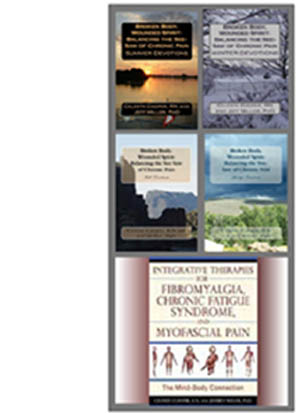The
original article, 10
Fast Facts Fibromyalgia is Real, appeared September 17, 2016 on ProHealth.
The article continues to garner attention, so with ProHealth’s permission I am
sharing the article in its entirety here on The
Pained Ink Slayer blog.
Those
of us who live with fibromyalgia know the pain, cognitive dysfunction, poor
sleep quality, and fatigue. We understand and can discuss these things with
fellow patients, but when we are confronted with someone who knows very little
about FM, we sometimes become tongue-tied. Maybe that’s because fibromyalgia is
a complex disorder and fibrofog gets in our way. Maybe we let others play on
our vulnerabilities, making us feel insecure about our response.
And,
maybe we can do better by being prepared with some quick facts.
Following
are ten fast facts that will allow your tongue to flow freely as it forms the
words that prove fibromyalgia is real.
1.
Fibromyalgia
is not a new disorder. As reported in our book, the collective symptoms of fibromyalgia (a syndrome)
were first documented in the early 1800s by British surgeon, William Balfour.
Nearly a century later, another British pioneer, Sir William Gowers, gave the
syndrome its first name, fibromyocitis. Throughout time, fibromyalgia has been
known by names that reflect the understanding of the era. (1)
2.
Fibromyalgia
is a physical problem that has demonstrated abnormal blood flow in specific
areas of the brain (2) and brain scans show unique brain activity (3) in response
to pain.
3.
The
primary, consistent symptom of chronic body-wide pain and tenderness is present
in ALL fibro patients, just as the primary symptoms of other illnesses define
that syndrome or disease.
4.
Fibromyalgia
is consistently accompanied by cognitive dysfunction that is significantly more
challenging than simple forgetfulness and there is evidence. For instance, the
hippocampus, located in the brain, is thought to be the center for emotion,
memory, and the autonomic nervous system regulation. It plays a crucial role in
maintenance of cognitive functions, sleep regulation, and pain perception, and
hippocampus metabolic dysfunction has been seen in fibromyalgia. (4, 5)
5.
Fibromyalgia
is more than not sleeping well for a night or two. It’s like never sleeping at
all, and we don’t “bounce back” when we do get eight hours. Because we don’t
get normal slow wave sleep progression (6), the healing stages of sleep, the
micro-healing that occurs with normal sleep patterns is impaired. This
phenomenon could very well explain cellular oxidative stress identified in
fibromyalgia. It’s far more than not getting a good night’s sleep for those of
us with fibromyalgia.
6.
Fatigue
is a symptom of fibromyalgia; it is not laziness. Sometimes, we have to remind
our peeps of our “before person.”
7.
While
depression can accompany fibromyalgia or any chronic illness, it is not a
primary symptom. Major depression has its own diagnostic criteria.
8.
Fibromyalgia
is usually accompanied by another disorder. (7) So, when someone tells
you no one could have all that wrong, let him or her know that in fact, we can
and do.
9.
There
is a blood test for fibromyalgia, it’s called the FM/a Test® and some insurance
carriers are now covering it. I did have the test and I do have the physical
cellular changes seen with this test that are specific to fibromyalgia. (8)
10.While some
believe fibromyalgia is progressive in nature and others do not, fibromyalgia
is considered a life-long central nervous system disorder. (9) It is not
going away because our friends, many times eager to help, tell us they just
read about a miracle cure in some tabloid magazine.
I
once had a neurologist tell me he would not see me for my migraines, because he
didn’t “believe in” fibromyalgia. After I recovered, I simply said, “fibromyalgia
is not a belief system, I will not be back.” I was thankful I didn’t “come in
like a wrecking ball” like Miley Cyrus and hit him upside the head with my
purse.
WE
DO NOT NEED TO DEFEND OURSELVES FOR HAVING FIBROMYALGIA!
I
have learned from various encounters that some folks are innocently ignorant
and want to know more. For those folks, I spend the time. I have also learned
there are closed-minded people who are not worth the effort because they have
no intention of listening. If someone makes you defensive, simply reflect their
words back to them and change the subject, even if it’s a healthcare provider.
We do not need a healthcare provider who is stagnant in a profession that is in
a constant state of learning. Give these ten facts to a staff member or leave
some copies
in the waiting room. They are sure to generate some discussion.
References:
- Cooper, C. and Miller, J. 2010. Integrative Therapies for
Fibromyalgia, Chronic Fatigue Syndrome, and Myofascial Pain: The Mind-Body
Connection. Vermont: Healing Arts Press.
- Guedj E, Cammilleri S, Niboyet J, Dupont P, Vidal E, Dropinski JP,
Mundler O. Clinical
correlate of brain SPECT perfusion abnormalities in fibromyalgia. J
Nucl Med. 2008 Nov;49(11):1798-803. doi: 10.2967/jnumed.108.053264. Epub
2008 Oct 16.
- Kim J, Loggia ML, Cahalan CM, Harris RE, Beissner F, Garcia RG,
Kim H, Barbieri R, Wasan AD, Edwards RR, Napadow V. The
somatosensory link in fibromyalgia: functional connectivity of the primary
somatosensory cortex is altered by sustained pain and is associated with
clinical/autonomic dysfunction. Arthritis Rheumatol. 2015 May.
- Emad Y, Ragab Y, Zeinhom F, El-Khouly G, Abou-Zeid A, Rasker JJ. Hippocampus
dysfunction may explain symptoms of fibromyalgia syndrome. A study
with single-voxel magnetic resonance spectroscopy. J Rheumatol. 2008
Jul;35(7):1371-7. Epub 2008 May 15.
- Ichesco E, Puiu T, Hampson JP, Kairys AE, Clauw DJ, Harte SE,
Peltier SJ, Harris RE, Schmidt-Wilcke T. Altered fMRI
resting-state connectivity in individuals with fibromyalgia on acute pain
stimulation. Eur J Pain. 2016 Aug;20(7):1079-89. doi: 10.1002/ejp.832.
Epub 2016 Jan 15.
- Vijayan S, Klerman EB, Adler GK, Kopell NJ. Thalamic mechanisms
underlying alpha-delta sleep with implications for fibromyalgia. J
Neurophysiol. 2015 Sep;114(3):1923-30. doi: 10.1152/jn.00280.2015. Epub
2015 Aug 5.
- Bennett, RM. Pain
management in fibromyalgia. Pain Manag. 2016 May;6(4):313-6. doi:
10.2217/pmt-2016-0026.
- FM/a® Blood Test – “How
To” and My Results. June 2016 Blog.
- Fibromyalgia
Has Central Nervous System Origins. American Pain Society, Press Room,
May 16, 2015. (Accessed 2016, September 9).
Subscribe to the World's Most
Popular Newsletter
In healing,
Think adversity?-See opportunity!















